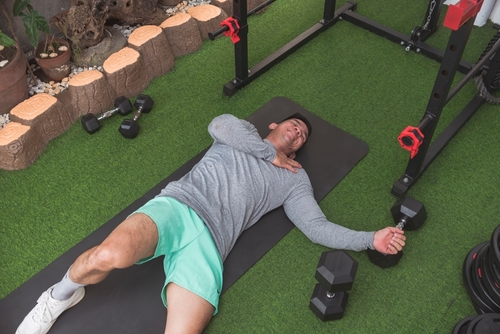Rotator Cuff Injury in Weightlifters: Risk Factors and Prevention Strategies
February 9, 2024 3:29 pm Leave your thoughts
Weightlifting is a popular form of exercise and an Olympic sport that requires strength, technique, and precision. However, weightlifters, both amateurs and professionals, are at risk of sustaining injuries, particularly to the rotator cuff. The rotator cuff is a group of muscles and tendons that surround and stabilize the shoulder joint. In this blog post, we will discuss the risk factors associated with rotator cuff injuries in weightlifters and provide strategies to prevent these injuries and optimize performance.
1. Improper Lifting Techniques:
One of the primary risk factors for rotator cuff injuries in weightlifters is improper lifting techniques. Poor form, such as lifting weights overhead with a rounded or slouched back, can put excessive stress on the shoulders, leading to muscle strains, tendonitis, or even tears. It is crucial to prioritize correct technique and form while lifting weights to avoid unnecessary strain on the rotator cuff muscles.
2. Overtraining:
Overtraining, or excessive training without adequate rest and recovery, can increase the risk of rotator cuff injuries. Continuous stress on the shoulder joint and surrounding muscles can result in fatigue and overuse, making weightlifters more prone to injuries. It is essential to incorporate rest days into your training routine to allow your body and muscles to recover adequately.
3. Muscle Imbalances:
Muscle imbalances between the internal and external rotators of the shoulder can contribute to rotator cuff injuries. Weightlifting activities often strengthen the muscles on the front of the shoulder, such as the pectorals and deltoids, while neglecting the muscles on the back of the shoulder, including the external rotators. This imbalance can lead to instability and weakness in the shoulder joint, increasing the risk of injury. To prevent this, weightlifters should incorporate exercises that target the external rotators, such as band pull-aparts or external rotations, into their training programs.
4. Proper Warm-up and Stretching:
Before engaging in weightlifting activities, it is essential to warm-up and stretch the muscles to prepare them for the intense workout. A dynamic warm-up, consisting of exercises like arm circles, shoulder rolls, and shoulder stretches, can help increase blood flow to the muscles, improve joint lubrication, and enhance flexibility. Stretching exercises focused on the shoulders and rotator cuff, such as doorway stretches and cross-body stretches, can also help improve range of motion and flexibility, reducing the risk of injuries.
5. Gradual Progression and Proper Load Management:
To prevent rotator cuff injuries, weightlifters should focus on gradual, progressive training rather than pushing themselves to lift excessively heavy weights too soon. Gradually increasing the weights and intensity over time allows the muscles, tendons, and joints to adapt and strengthen. Proper load management ensures that the demands placed on the rotator cuff are within a manageable range and reduces the risk of overloading and injury.
6. Focus on Technique and Form:
As mentioned earlier, proper technique and form are crucial in weightlifting to prevent rotator cuff injuries. It is important to prioritize quality of movement over quantity. Use appropriate weights that allow you to maintain proper form throughout each exercise. If you are unsure about your technique, seek guidance from a qualified coach or trainer who can provide feedback and make corrections.
7. Strengthening Exercises for the Rotator Cuff:
Including specific rotator cuff strengthening exercises in your training routine can help prevent injuries and enhance shoulder stability. Exercises such as external rotations, internal rotations, and shoulder abduction exercises target the rotator cuff muscles and improve their strength and endurance. Implementing these exercises regularly can help prevent muscle imbalances and provide stability to the shoulder joint during weightlifting activities.
Summary
Rotator cuff injuries can significantly impact weightlifters’ ability to perform and progress in their training. To prevent these injuries and optimize performance, weightlifters should focus on proper lifting techniques, avoid overtraining, address muscle imbalances, warm-up and stretch adequately, manage loads and progress gradually, emphasize technique and form, and include rotator cuff strengthening exercises in their training routine. By following these strategies, weightlifters can reduce the risk of rotator cuff injuries and ensure long-term shoulder health and performance in their weightlifting pursuits.
Need an Orthopedic Surgeon in Las Vegas, NV?
Welcome to Bernard Ong, M.D.! With extensive experience and an expert in the industry, Dr. Bernard Ong is the premier orthopedic surgeon in Las Vegas, Nevada. Our services focus on providing the very best in patient care, including orthopedic surgery, sports medicine, arthroscopy, meniscus surgery, ACL surgery, knee replacement, and more. As a sole practitioner, you know you are getting the highest level of personalized care from Dr. Ong. Contact us today for more information or to schedule your appointment!
Categorized in: Rotator Cuff Injury
This post was written by admin
